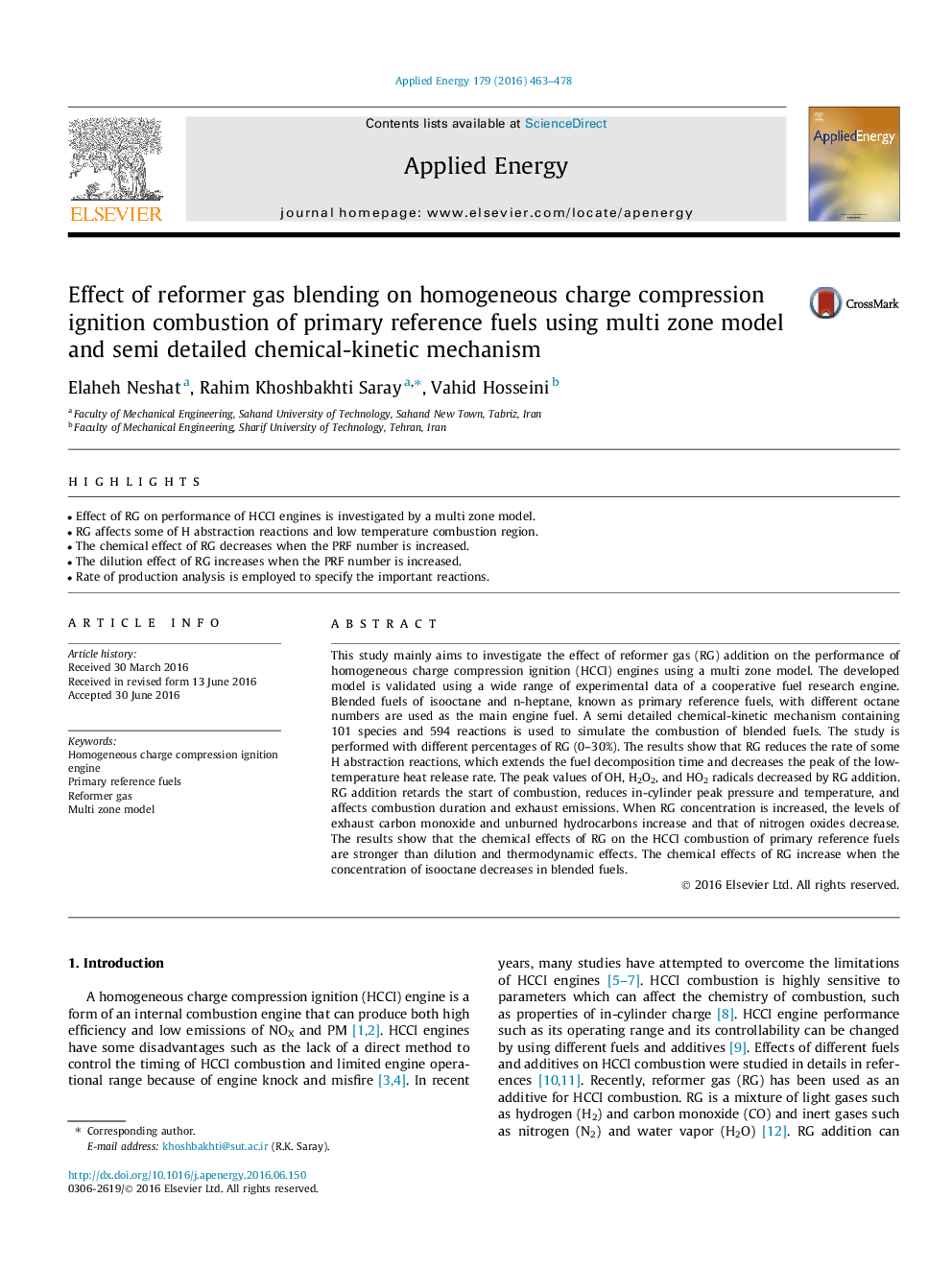| Article ID | Journal | Published Year | Pages | File Type |
|---|---|---|---|---|
| 6682167 | Applied Energy | 2016 | 16 Pages |
Abstract
This study mainly aims to investigate the effect of reformer gas (RG) addition on the performance of homogeneous charge compression ignition (HCCI) engines using a multi zone model. The developed model is validated using a wide range of experimental data of a cooperative fuel research engine. Blended fuels of isooctane and n-heptane, known as primary reference fuels, with different octane numbers are used as the main engine fuel. A semi detailed chemical-kinetic mechanism containing 101 species and 594 reactions is used to simulate the combustion of blended fuels. The study is performed with different percentages of RG (0-30%). The results show that RG reduces the rate of some H abstraction reactions, which extends the fuel decomposition time and decreases the peak of the low-temperature heat release rate. The peak values of OH, H2O2, and HO2 radicals decreased by RG addition. RG addition retards the start of combustion, reduces in-cylinder peak pressure and temperature, and affects combustion duration and exhaust emissions. When RG concentration is increased, the levels of exhaust carbon monoxide and unburned hydrocarbons increase and that of nitrogen oxides decrease. The results show that the chemical effects of RG on the HCCI combustion of primary reference fuels are stronger than dilution and thermodynamic effects. The chemical effects of RG increase when the concentration of isooctane decreases in blended fuels.
Related Topics
Physical Sciences and Engineering
Energy
Energy Engineering and Power Technology
Authors
Elaheh Neshat, Rahim Khoshbakhti Saray, Vahid Hosseini,
